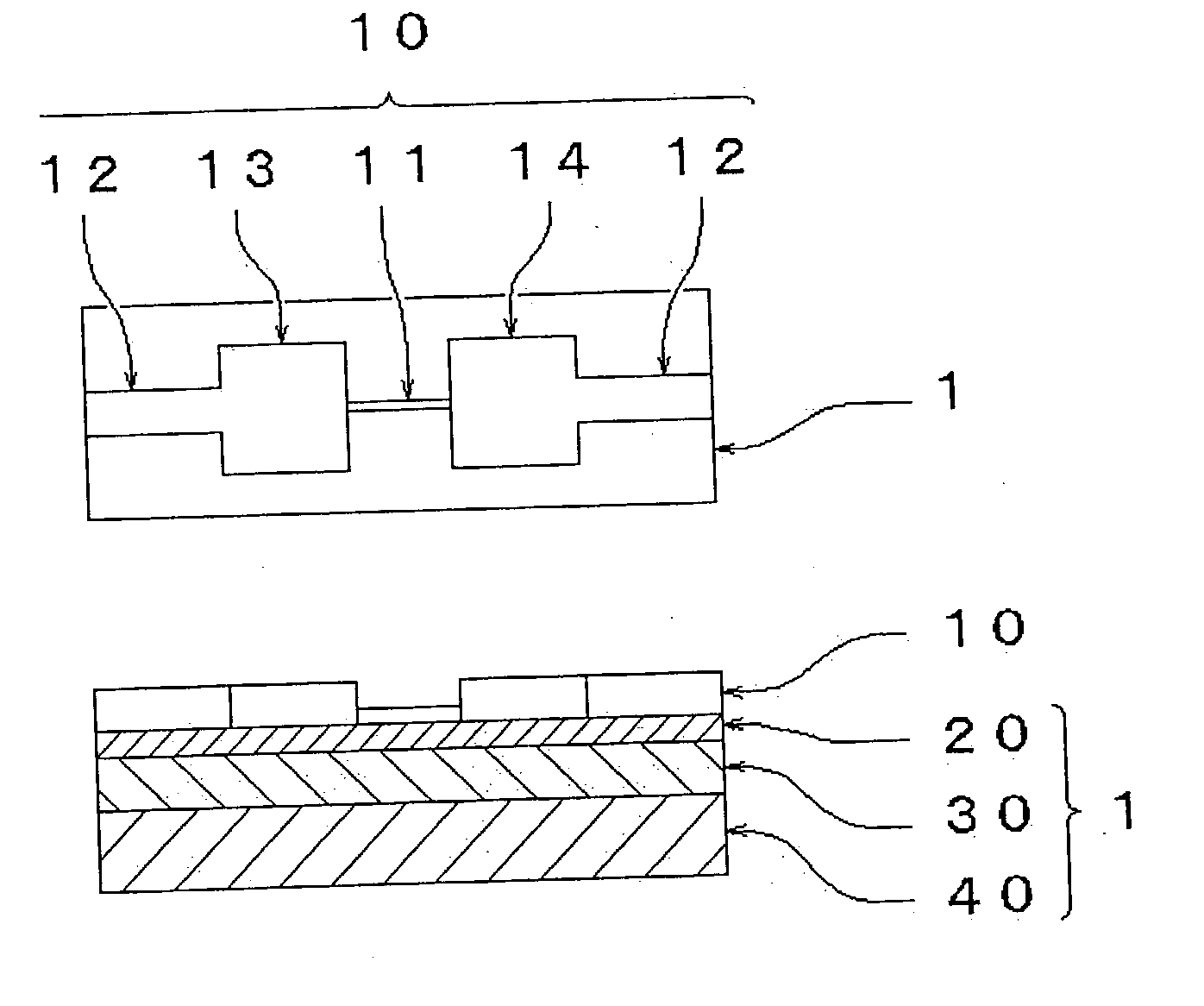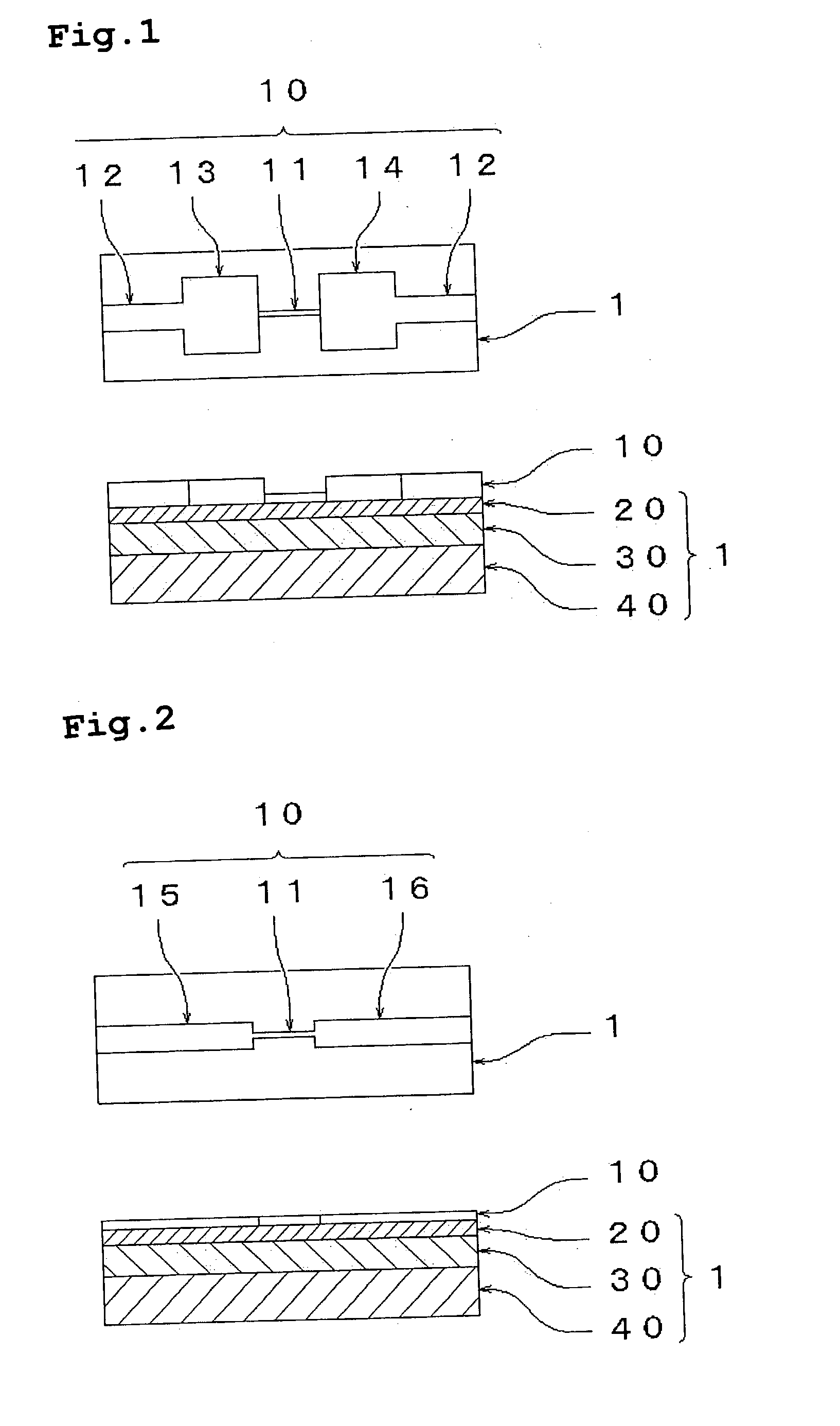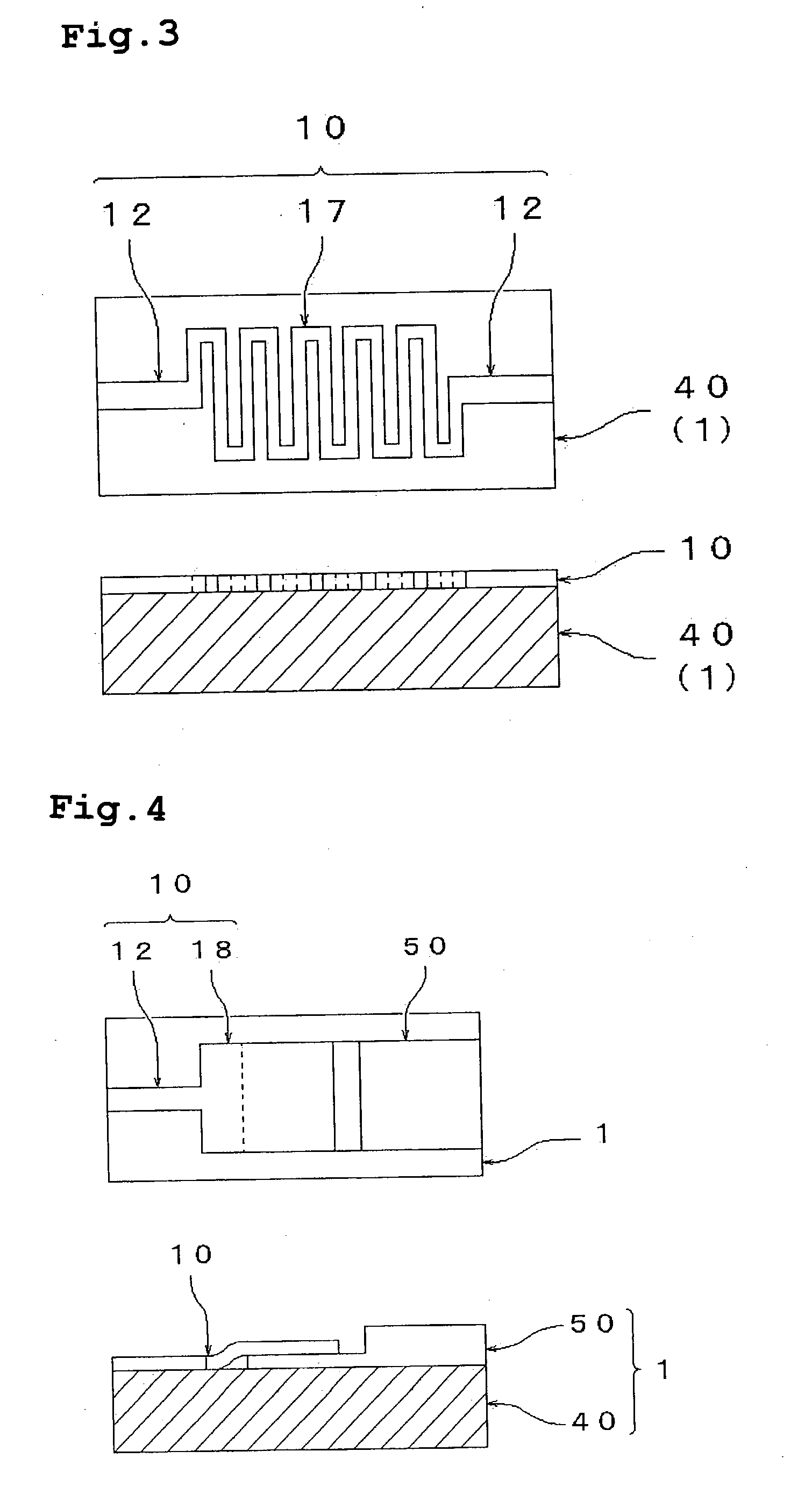Structure matter of thin film particles having carbon skeleton, processes for the production of the structure matter and the thin-film particles and uses thereof
a technology of structure matter and thin film particles, which is applied in the direction of water-setting substance layered product, chemistry apparatus and processes, transportation and packaging, etc., can solve the problems of poor position selectivity, degradation of a semiconductor part, and no concrete methods have been proposed. , to achieve the effect of easy utilization of electronic nature or stability, simple and clean method, and high electric conductivity
- Summary
- Abstract
- Description
- Claims
- Application Information
AI Technical Summary
Benefits of technology
Problems solved by technology
Method used
Image
Examples
example 2
[0218] The aqueous dispersion, having a concentration of 0.45 wt %, of the oxidized form thin film particles, which had an oxygen content of about 42 wt % and a hydrogen content of about 2 wt % according to the elemental analysis results of the particles after vacuum-drying at 40.degree. C. and had a planar-direction size of about 20 .mu.m, obtained in Example 1, was used as a dispersion A. The following experiments were carried out using the dispersion A.
[0219] Two gold wiring lines were formed on a silica glass substrate at a space of 2 mm. A thin film layer formed of the thin film particles was formed such that the thin film layer straddled the two wiring lines. The film formation was carried out by dropping the dispersion A between the wiring lines with a pipet and drying the dispersion medium at 80.degree. C. for 15 minutes. The thickness of the film after the drying was about 1 .mu.m. The thus-obtained thin film layer was irradiated with light of an ultrahigh pressure mercury ...
example 3
[0221] Similarly to Example 2, the dispersion A was dropped between two gold wiring lines on a silica glass substrate, the dispersion was dried at 80.degree. C. for 15 minutes to form an about 1 .mu.m-thick thin film layer formed of the thin film particles. The thus-produced thin film layer was irradiated with light of a xenon lamp (300 W) from a distance of 15 cm. After irradiation for 40 minutes, the thin film layer was measured for resistance. The resistivity of the thin film particles was calculated from the measured resistance value, to find it was 1,500 .OMEGA..multidot.cm. Further, the thin film layer was irradiated for 80 minutes and the resistivity became 50 .OMEGA..multidot.cm.
example 4
[0222] There was produced a metal mask in which two apertures having a width of 1 mm.times. a length of 5 mm were formed at an interval of 2 mm in a central portion, for the purpose of producing, as a reduction line pattern, two lines having a line width of 1 mm and a length of 5 mm at an interval of 2 mm in a thin film layer formed of thin film particles.
[0223] The dispersion A was dropped in a domain of approximately 20 mm.times.20 mm in a central portion of a silica glass substrate, and it was dried at 80.degree. C. for 15 minutes, to form a thin film layer formed of the thin film particles. The thickness of the film after the drying was about 0.1 .mu.m. The metal mask was placed such that the above apertures were disposed on the thin film layer. The thin film layer was irradiated with light of the same ultrahigh pressure mercury lamp as that used in Example 2 from a distance of 20 cm for 40 minutes. In the thin film layer after the light irradiation, as a result, only portions w...
PUM
 Login to View More
Login to View More Abstract
Description
Claims
Application Information
 Login to View More
Login to View More - R&D
- Intellectual Property
- Life Sciences
- Materials
- Tech Scout
- Unparalleled Data Quality
- Higher Quality Content
- 60% Fewer Hallucinations
Browse by: Latest US Patents, China's latest patents, Technical Efficacy Thesaurus, Application Domain, Technology Topic, Popular Technical Reports.
© 2025 PatSnap. All rights reserved.Legal|Privacy policy|Modern Slavery Act Transparency Statement|Sitemap|About US| Contact US: help@patsnap.com



